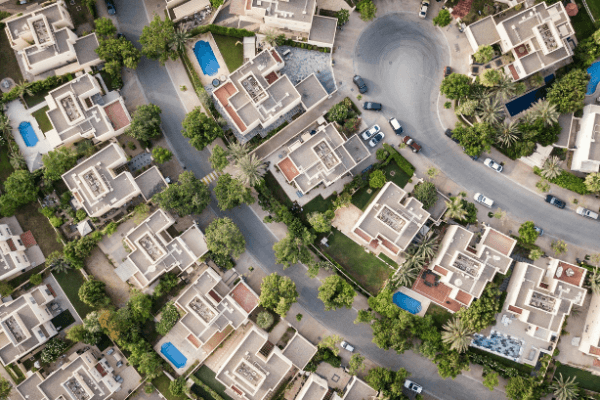Thought Leadership
Leadership demands resilience, mental clarity, and sustained energy—qualities that are deeply influenced by physics, biology, chemistry, and time. While many leaders focus on external performance metrics, true leadership longevity requires optimising body mechanics, biochemical balance, physiological health, and long-term planning. Here’s how you can apply these principles to prioritise your health without compromising professional success.
- Physics: Aligning Movement with Longevity
Leadership is about longevity – both in career and health. Newton’s third law states that every action has an equal and opposite reaction—and your body is no exception. Your posture, gait, and movement patterns dictate long-term musculoskeletal health, energy levels, and physical endurance over time. Ignoring the physics of posture and movement leads to biomechanical stress, joint degeneration, and inefficient energy expenditure.
Physical-based actionable steps leaders can implement include:
- Fix postural imbalances: Slouching or improper desk alignment causes long-term joint stress. Set reminders to adjust your posture throughout the day, and incorporate core-strengthening exercises to support alignment.
- Use technology wisely: AI-based motion tracking tools, such as MAI-Motion can provide real-time feedback on your movement patterns, helping to correct misalignments before they cause long-term damage.
- Adopt low-impact movements: Sustainable energy is key to leadership endurance. Activities like swimming and cycling build strength while minimising joint stress, allowing you to perform at your best without injury setbacks.
By prioritising physics-based alignment strategies, leaders can maintain mobility and strength well into their later years, reinforcing their ability to inspire and sustain high performance.
- Biology: Fuelling the Body for High Performance
Your body operates as a biological machine, where every organ system depends on nutrients, hydration, and recovery cycles. As a leader, making decisions hinges on how well you fuel your body and brain. However, chronic stress, sleep deprivation, and poor nutrition accelerate biological aging, leading to fatigue, impaired decision-making or cognitive function, and decreased resilience. To sustain optimal biological function, leaders should:
- Hydrate Strategically: Even mild dehydration disrupts cellular function, cognitive clarity, and metabolic efficiency. Drinking at least 6–8 cups of water daily supports brain function and musculoskeletal health.
- Balance Macronutrients for Sustainable Energy: Over-reliance on caffeine and sugar causes energy crashes, weakening immune function and metabolic stability. Instead, prioritise protein-rich meals, omega-3 fats, and slow-digesting carbohydrates for consistent energy.
- Regulate Stress Chemistry: Chronic stress dysregulates hormone levels, weakening immune function and neuroplasticity. Activities like mindfulness, deep breathing, and outdoor exposure stabilise cortisol levels, preventing burnout.
By managing nutritional and physiological inputs, leaders enhance cellular efficiency, cognitive function, and overall resilience.
- Chemistry: Mastering the Science of Regeneration
Every decision you make is governed by biochemical reactions—from neurotransmitter balance to hormonal fluctuations. Leaders who understand and control these chemical processes gain a significant advantage in mental clarity, emotional regulation, and longevity.
- Optimise Sleep Chemistry: Deep sleep regulates hormone production, cognitive repair, and metabolic efficiency. Creating a dark, cool, and tech-free sleep environment enhances melatonin release, improving focus and decision-making.
- Balance Cortisol to Avoid Burnout: High-pressure leadership triggers chronic cortisol spikes, which impair immune function, increase inflammation, and disrupt emotional stability. Engaging in regulated breathing exercises, structured downtime, and controlled physical activity stabilises stress chemistry.
- Use Biochemical Feedback Loops: AI-driven wearable health trackers provide real-time data on heart rate variability (HRV), glucose levels, and metabolic efficiency, allowing leaders to make data-driven adjustments to optimise performance.
Understanding the chemical mechanisms of health enables leaders to enhance energy production, prevent cognitive decline, and sustain peak performance.
- Time: Future-Proofing Your Health Data
Leaders use data analytics to predict business trends—why not apply the same logic to health? Tracking personal biometric data, musculoskeletal scans, and metabolic trends provides long-term insight into physiological changes. Creating a ‘Digital Body Bank’ (or Digital Twin) allows for:
- Regular Health Check-ups as Performance Reviews: Just as companies analyse KPIs, leaders should schedule routine blood tests, cardiac screenings, and metabolic assessments to establish baselines.
- Wearable Technology for Proactive Adjustments: Devices tracking sleep patterns, heart rate variability, and movement efficiency allow real-time course corrections to prevent burnout.
- Maintaining Historical Health Records: Storing X-rays, MRIs, and diagnostic reports creates a reference point for future comparison, ensuring early intervention when needed.
By leveraging AI-driven health tracking, leaders gain the foresight to prevent future health crises, ensuring they remain mentally and physically capable for long-term success.
The Science of Leadership Resilience
Neglecting health doesn’t just risk burnout—it risks poor decision-making, reduced efficiency, and diminished leadership impact. True leadership demands resilience, and resilience begins with a scientific approach to well-being.
By applying physics-based movement strategies, biological optimisation, chemical regulation, and time-driven health tracking, leaders don’t just extend their lifespan—they enhance the quality of every moment they live.
About the Author
Professor Paul Lee is the founder of RegenPHD, the movement tool, MAI-Motion and the author of Regeneration by Design. He has redefined the boundaries of regenerative medicine by blending over two decades of elite sports and orthopaedic expertise with ground-breaking engineering insights. Paul’s unique science-fuelled approach and mantra of “Stay Young, Be Strong, Live Forever” empowers individuals to design a path to superhuman health, transcending the traditional boundaries of ageing. A best-selling author of Regeneration by Design, Paul offers a fresh perspective on making 2025 the year of achievable transformation.
AI comes along with words such as disruption, unprecedented and game changing, plus a few hundred more. Undoubtedly, we have not seen the rise of a technology of this magnitude before. A bit of a miracle,...
Artificial intelligence isn’t just science fiction anymore—it’s part of our daily lives, changing how industries operate, guiding business choices, and altering how companies connect with customers...
As the climate crisis deepens, businesses are under increasing pressure to adopt sustainable practices, and the world’s oceans have emerged as a critical frontier for innovation and climate...
In the ever-evolving world of finance, few phenomena have captivated public attention and challenged conventional wisdom quite like the meteoric rise of meme stocks. This unorthodox corner of the market,...
The stadium erupted when Virat Kohli secured his 51st ODI century against Pakistan this Sunday, 23rd February, but the real magic wasn’t in the celebration. It was in the method: a thesis on dominating...
In a year when advertising spots commanded an eye-watering $8 million for just 30 seconds of airtime, Super Bowl LIX’s commercial breaks became a showcase of creative ambition. From heartwarming...
The construction industry in the Middle East is rapidly expanding, driven by government investments, increasing populations, and efforts to diversify economies. In Saudi Arabia, Vision 2030 is driving...
If you remember one thing from this article, it’s this: “Know thyself.” – Socrates. The importance of self-awareness and authenticity as the foundation of true leadership is a principle that has...
The real estate landscape is rapidly changing, influenced by technological innovation, societal shifts, and the evolving priorities of a new generation of property seekers. This change follows a quiet...

















